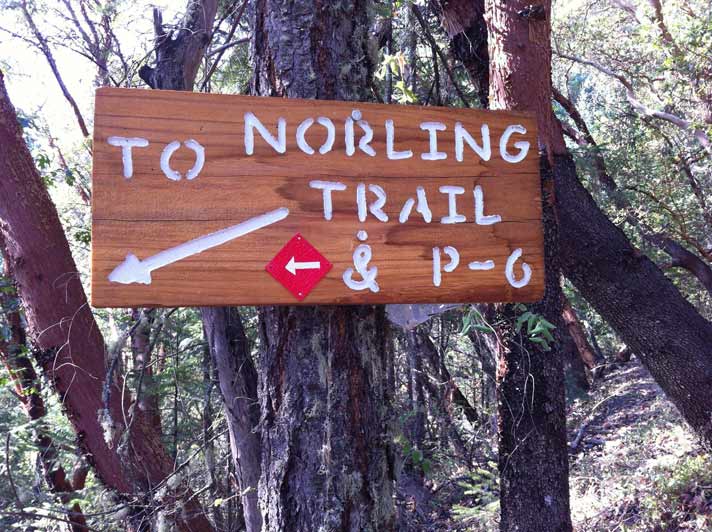Trail Talk – May 2016
No longer a line item in most governmental budgets, trail maintenance for hiking trails across the US has become the responsibility of the user groups. It’s not always an onerous task; indeed, it’s healthy work in the out-of-doors, a wonderful diversion from time spent in stale gyms, creating reps with static weights. To construct or maintain a trail that I will use as a runner or hiker, that my friends and family can enjoy with me, is enriching and fulfilling. To know that untold others will also enjoy this path through the wooded hills instills even more satisfaction.
Jacksonville’s trail system(s) are loved. In-season, waterfalls cascade down steep canyons where miners once moiled for riches. Wildflowers are abundant. Rare species of plant and animal can be found. Being public space (in the all too often private) foothills of our valley, these areas provide year-round recreation for non-motorized folks. Often, in the remnant oak savanna and mixed madrone/fir forests, we can sense what so much of our valley was like before the arrival of European-style civilization. It is quite delightful to poke around in the wild nooks and crannies so close to town, yet away from the bustle of highways and markets.
A civilization is enriched by its attitude toward wilderness. In fact, Edward Abbey, Aldo Leopold, and others argued eloquently that no people can be considered civil in nature who have no nature to be civil in. And it’s this civility I wish to address.
Multi-use public areas provide opportunity for a variety of user groups. Jacksonville’s trail systems are no exception. It’s important to recreate in a style that respects the integrity of the environment as well as other users. Rules based on city codes are posted in each of the parks. It’s the other, often unwritten, codes of conduct that deserve a bit of light.
A trail designed for a hiker, (as many of the trails are) is not designed for high-speed bicycle use. Many trails are steep, with sharp corners, steps, water bars, and narrow treads. Heavy bicycle use can destroy the integrity of the outslope with careless riding. Safety is an issue, as blind corners are abundant in wooded areas. Care has been taken to identify trails where hiker use is compromised by bicycle traffic, and one would hope that riders will respect the posted signage indicating this.
Inconsiderate hikers break down trails, as well. Cutting off switchbacks on hillsides (an act referred to as cowpathing) has tremendous negative consequences. Trail edges are ground down and backslopes eroded, resulting in something akin to an otter slide down the side of the hill. In wet weather, these sloppy trail nuisances become hazards, both to trail users and to the integrity of the trails.
These are trails to be enjoyed by all. Conflicts between user groups lead to unwelcome closures. There’s beauty in them thar hills and one hopes to see multi-users on our multi-use trails.

 Trail Talk is a monthly column by Clayton Gillette about hiking the Jacksonville Woodlands trail system. For more information, please visit the Jacksonville Woodlands Association website at
Trail Talk is a monthly column by Clayton Gillette about hiking the Jacksonville Woodlands trail system. For more information, please visit the Jacksonville Woodlands Association website at